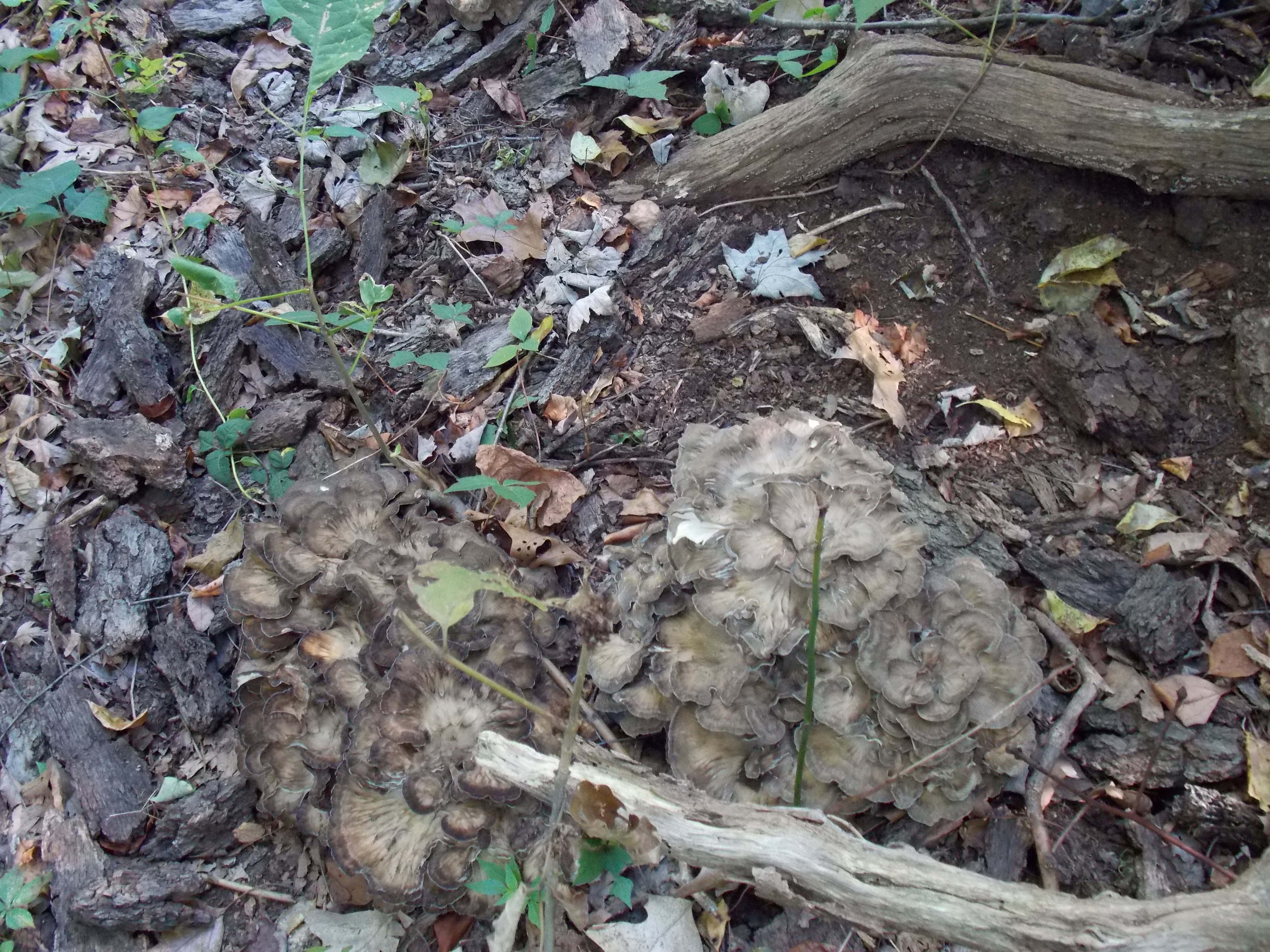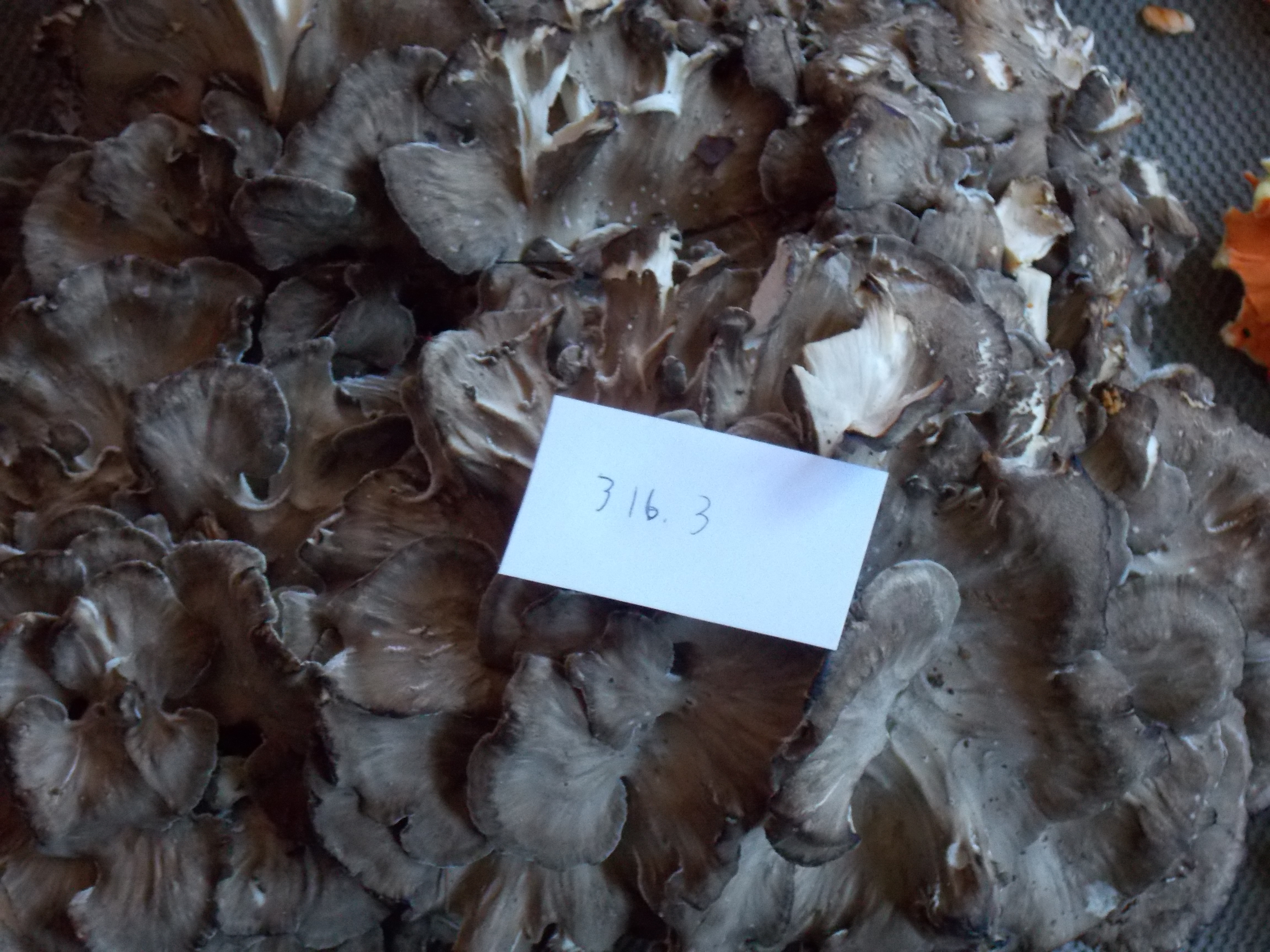Several years ago, I could no longer resist and took to the woods to find mushrooms to eat. After weeks of watching dozens of others post their trophy fall mushroom pics on social media, I had to get out and give this a shot. I picked a piece of woods at random and went out to just see how many kinds I could find but then also to seek a couple of prizes that people said were popping out of trees, stumps and logs right now.

In short, I had a great afternoon, mostly taking pictures of mushrooms I wanted to ID later. The number of different mushrooms out there in Pennsylvania’s September forest shocked me and I was excited to just begin learning. But before I’d finished my lap, I ran into a stack of bright Chicken of the Woods that will never be forgotten. I cut all of it, feeling sure about this one, and moved on.
Just before I returned to the parking lot, bright orange again caught my eye and I hurried toward a magnificent cluster on a stump next to a little brook. These were huge, I couldn’t believe my good fortune. But, picking one and turning it over, I saw immediately that this was something other than chicken of the woods; it had gills and a distinct stem. This was Jack o’ Lantern and I wanted to pick it and take it home so badly just because of its ostentatious color and size, but I already knew better. The disappointment didn’t last long.
In the late fall grasses just behind the Jack o’ Lantern and against a dead tree, there was a gargantuan brown mushroom mass that simply looked like a pile of oak leaves. I just stood and gaped. I’d seen pictures of these too but hadn’t expected to find one my first time out. I couldn’t even remember what it was called but the people posting pics of these had seemed very, very happy. So was I.


Back at my kitchen I cleared the table and laid out about thirteen pounds of mushrooms. No, I had no idea how much I could realistically consume and no idea how to preserve the stuff for future use. If I had, I might have carried off three pounds in my bag rather than thirteen. Later, I found that I liked Chicken of the Woods but I found that I liked Hen of the Woods (the drab giant prize at the end of my hike) even better.
Hen of the Woods is the big prize. It has become my very favorite mushroom though it’s been a close contest with the morels of April and May. Maybe if the morels grew to twenty pounds they’d win. Fall has always been a special time of the year for me and now it’s a little more special. Come late September, I claim I can hear them oozing up between the roots of beech and oak, and sometimes can distinctly hear them calling to me at night.
The Japanese name for this prize edible is “Maitake” meaning “We will dance when it is found.” I sympathize with this and hope no one has secretly been recording the moments I’ve found clusters of this mushroom. And, by the way, it does come in clusters, sometimes appearing as a single mushroom at the base of a tree but more often appearing in groups, as though you needed more than a single five pound mushroom. That first Maitake I found had two “little brothers.”



If there’s a downside to hen, it’s that it hurts and even kills trees, especially some of the oldest oaks. When I got started with it, I felt an impulse at first to spread it around and get some growing around each oak in the forest. It was soon apparent that this would be unwise; there would soon be no oaks left in the forest if this tree disease ran rampant. I like to think I’m doing the forest a sort of service nowadays by eradicating the spore dispersal mechanism of this fungus. It just so happens it’s also the tastiest thing in the forest to eat.
In Japan, this mushroom has long been used to support the immune system, possessing a range of reported medicinal properties. Enhanced brain function is another of the reported benefits. I know this is true because I immediately got smarter about finding these as soon as I ate the first one.
I don’t know about finding these mushrooms in all times and places but here’s how I find them in late September and early October here in Pennsylvania. First, I look for oak trees and the largest of oak trees (especially red oak) catch my eye first. Hens, for some reason, often seem to prefer park-like environments to deep woods. Look at trees on the edges of mowed areas or individual trees right out in the open. But don’t rule out trees deep in the forest either. And the first tree to mention is oak but I’ve found an awful lot of hens around beech and maybe one or two around maple. I especially check dead trees and trees showing signs of decay. I also check stumps and I go back to places that produce season after season.




Hens are easily identified and you can take them home to the pan with great confidence; there are no poisonous look-alikes. Black staining polypore, the giant polypore and Berkley’s polypore look something like hen but typically grow earlier in the year and have bigger “leaves.” All of these can be eaten but the non-hen species need to be harvested when very young or only the outermost edges need to be cut. Often these are used in soups.
Here in southwestern Pennsylvania hens seem to average about three pounds each and I’ve come to appreciate the smaller specimens which are often of the highest quality – a better texture and perhaps taste too. Within the last few years I have taken a couple of hens around fifteen pounds each and I saw one that had gone past which I estimated at about forty. It looked like a soggy, drab bean bag chair at the base of a dead tree.
September has been a bit on the dry side here this year and hot. The hens haven’t put in an appearance yet besides one really sad specimen which was old, wilted and bug-ridden. I wanted to eat it anyway. Yesterday, however, we began to receive almost constant light rain from a tropical system which came ashore and we’re still receiving drizzle from that same system. The forest is moist and temperatures have fallen. Color has suddenly appeared in the canopy and things, generally feel like it’s time to hunt hens. The forest beckons and I’m glad I’ve taken the last week in September off work to hunt the wily Hen of the Woods. Other mushrooms too… mostly hens.

One thought on “Hens in the Woods”